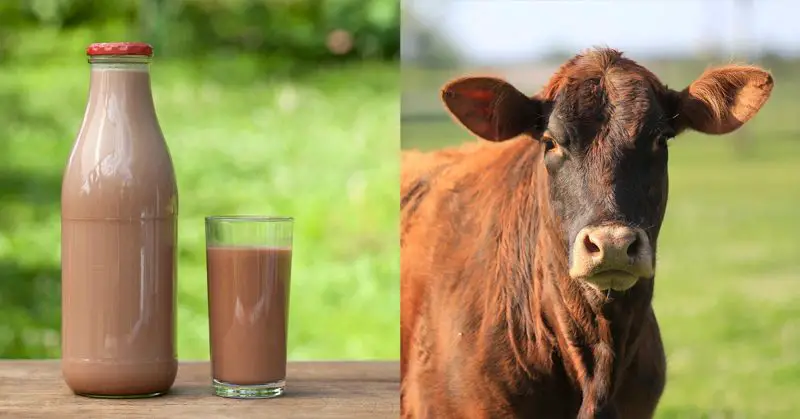Agricultural illiteracy is as real as it’s embarrassing, and we can’t continue to pass the ignorance down from generation to generation.
Chocolate milk is one of the simplest and tastiest concoctions you can make in the kitchen. All you have to do is add some cocoa and sugar to your milk, add a little water if you want, and voila! You have something amazing to drink. Children love chocolate milk especially and millions of Americans drink the already-made versions every day.

You would assume everyone knows how it’s made, but surprisingly, that would be a pretty high expectation. Recent research shows that nearly 10% of American adults believe chocolate milk comes straight from brown cows. [1] This is a huge slight on the American educational system and brings an important question to the limelight: if adults can think like this, what exactly are kids learning in school these days?
In a rather disappointing study conducted in 2017 by the Innovation Centre of US Dairy, about 7 percent of all American adults, a total figure of about 16.4 million, were convinced chocolate milk comes from brown cows. [2] No kids were involved and all the participants were well above the age of 18. It’s a wonder if they even know that cocoa and sugar are added, or perhaps, they assume the cow produces those as well. The sad reality is that these figures could be a lot higher since the sample size of the study was only 1,000 persons.
Of course, people all over the world are dragging Americans in the mud for this, and Food & Wine had to clear things up with a snarky comment. “First off, 48% of respondents said that they aren’t sure where chocolate milk comes from. Um, guys, it comes from cows – and not just the brown kind. Still, 7% of people – and remember, this survey talked to actual, grown-up adults – still think that chocolate milk only comes from brown cows. Actually, chocolate milk gets its flavor and color from cocoa beans.”
A reorientation is in order
People make a lot of claims about healthy diets and how dairy is no longer all the rave for health-conscious adults now. However, the study discovered that only 5% of people actually abstain from drinking milk and eating cheese. Meanwhile, 37% admitted to drinking milk straight out of the bottle or box, and 29% just use their kids as a front to purchase already-made chocolate milk for themselves – without knowing what its constituents are.
It’s become the new normal for people to consume food products with no idea about the agricultural processes that make these items available. Some may only know what the raw materials are and how they are grown, but somehow, the post-production processes aren’t as important once the food is processed and packaged.
According to writer and historian Ann Vileisis, relentless industrialization is the root cause of this seemingly logical kind of ignorance. [3]
“Indifference about the origins and production of foods became a norm of urban culture, laying the groundwork for a modern food sensibility that would spread all across America in the decades that followed,” Vileisis wrote, describing the agricultural awareness devolution from the 20th century. “Within a relatively brief period, the average distance from farm to kitchen had grown from a short walk down the garden path to a convoluted, 1,500-mile energy-guzzling journey by rail and truck.”
In light of this recent survey, it’s not so surprising that in a study conducted by the USDA in the ’90s, nearly 1 in 5 adults did not know that hamburgers are made from beef. Many more were entirely clueless about agricultural processes and some didn’t even know what foods were suitable for animal consumption.
“At the end of the day, it’s an exposure issue,” said Cecily Upton, co-founder of FoodCorps, a nutrition education non-profit. “Right now, we’re conditioned to think that if you need food, you go to the store. Nothing in our educational framework teaches kids where food comes from before that point.”
At this point, we can only hope people know blue cheese doesn’t come from blue cows.
References
- “Chocolate milk definitely doesn’t come from brown cows — but some adults think otherwise.” CNN. Nancy Coleman. Retrieved October 31, 2020.
- “4 Chocolate Milk Myths Busted.” Undeniably Dairy. Retrieved October 31, 2020.
- ” The surprising number of American adults who think chocolate milk comes from brown cows.” The Washington Post. Caitlin Dewey. Retrieved October 31, 2020.
- “Survey Finds That Too Many People Still Think Chocolate Milk Comes from Brown Cows.” Food & Wine. Elisabeth Sherman. Retrieved October 31, 2020.


